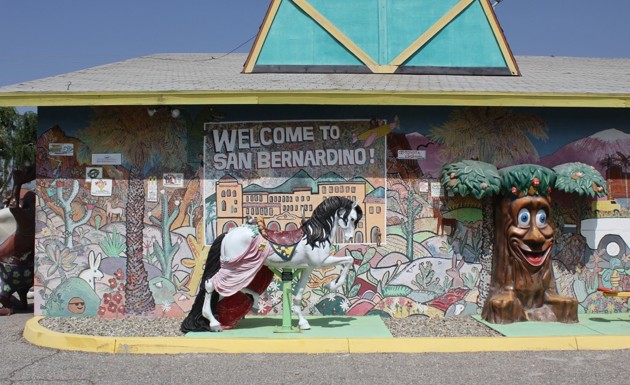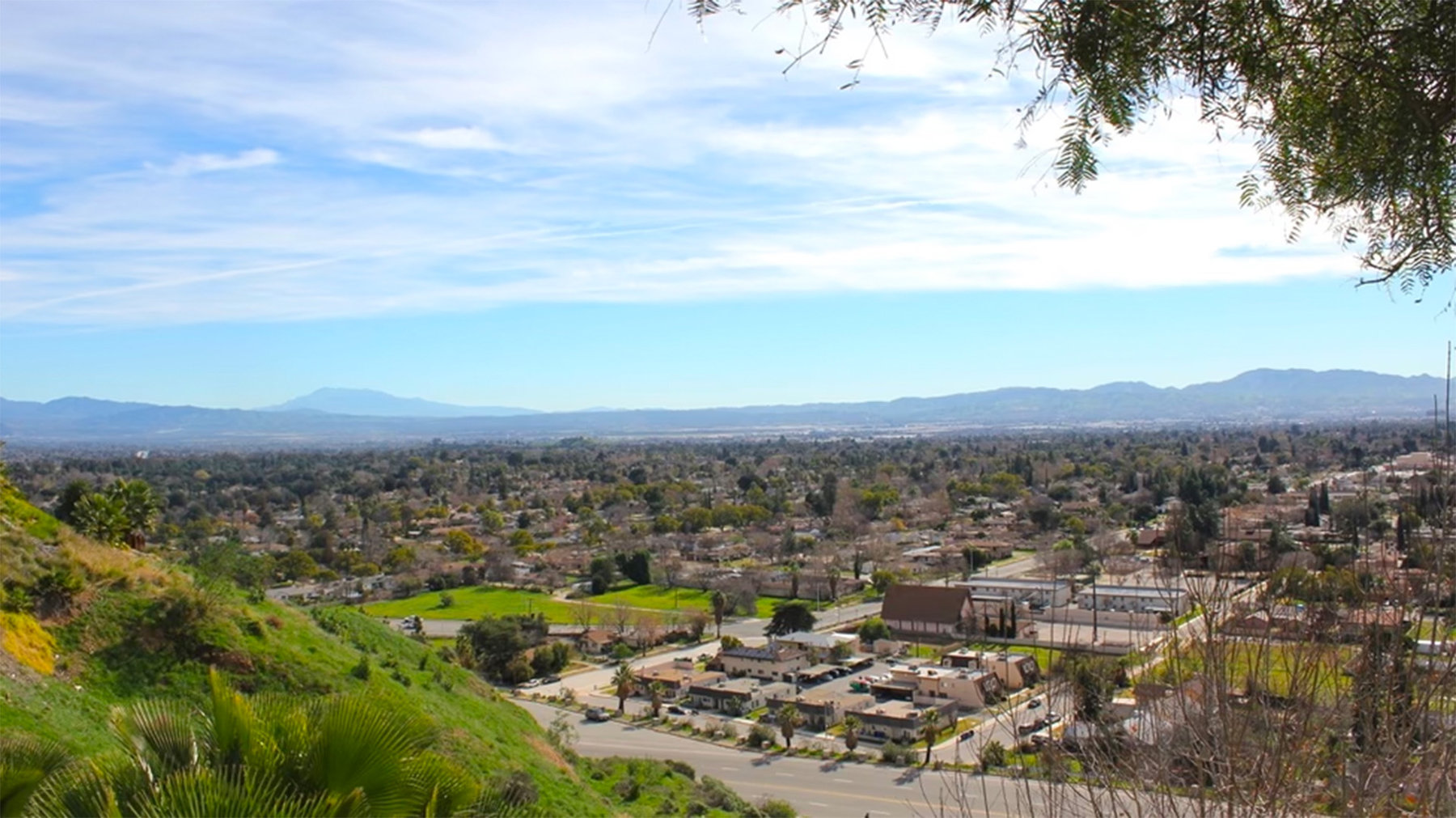
Every city has a story, and for a lot of the cities we’ve visited the story involves a challenge, and a response. Greenville, South Carolina, lost its textile mills, and then found new industries. Eastport, Maine, lost its sardine canneries and is now trying a surprising range of new alternatives. The quaintly beautiful lakeside town of Holland, Michigan, watched its downtown wither, until local benefactors put up the money for an eccentric-sounding but effective system to keep the streets and sidewalks snow-free and inviting all year round. And on down the list.
At face value the story of San Bernardino might seem to be a depressingly familiar life-is-unfair, regional-decline tale. The city’s employment base, which had always been blue-collar and (for California) highly unionized, lost not one but all of its main strongholds. We went into some of the details previously here. The city’s population is more “majority-minority” than the state as a whole—about 60 percent Hispanic for San Bernardino, versus about 40 percent for California—and significantly poorer. The median household income in the city is under $40,000, versus over $60,000 for the state and over $50,000 for the country. This makes San Bernardino the poorest city of of more than small-town size in California.

All of that is San Bernardino’s challenge. But it’s not the real problem. An even-poorer community would have had better prospects if it had been able to concentrate its resources and efforts where needed most. (Really? Really—we’ve seen that happen. It’s much of the story of the area of northeastern Mississippi called “the Golden Triangle,” which is poor and challenged by anyone’s standards. It’s also the backstory of Fresno, whose population is majority Hispanic and on-average poor but which is undertaking some big ambitious projects.)
The real problem for San Bernardino is not the people who live there or the businesses that have left. Rather it’s the city’s rules for governing itself.
* * *
Last year in a magazine article, I made the point that has come up frequently through of our travels: that at just the moment when common-sense, practical-minded governance is proving so difficult at the national level, it prevails at the city and regional level.
San Bernardino has, so far, been an exception to that pattern, in ways I’ll describe in due course. Why should this even matter to people outside the town? Because it directs attention to the often-neglected reality that the rules and norms of our governing systems really do matter.
For instance: The fledging United States found that they really couldn’t survive under the flawed rules of the Articles of Confederation. It took the practical-minded revisions of the Constitution to create a functioning republic. Of course in practice our Constitution is no longer so practical minded. Madison, Hamilton, and Washington would never have set up a two-votes-per-state Senate if there were a 70-to-1 population difference between states, as we now have between California and Wyoming; nor life tenure for Supreme Court justices, if longevity had been so great. But America has been rich and lucky enough to get along with a flawed system. Similarly, California as a whole is rich and vital enough, barely, to survive its crazy “reform”-minded term-limit rules and its initiative system.
San Bernardino’s governing system is as unusual among cities as California’s is among states, or America’s among nations. But unlike California as a whole, and unlike America, San Bernardino is not rich or lucky enough to survive the handicap of a badly flawed system. It doesn’t have the same margin for error. That is the drama that will come to a climax very soon when the consultants offer the “Plan of Adjustment” they have worked out for city officials recommending how San Bernardino should make its way forward, and the supervising federal judge, Meredith Jury, rules on the plans.

When the report comes out, I’ll be back to discuss the problems it has diagnosed and the prescriptions it recommends. Also we’ll hear more from people who have decided to stay and try in San Bernardino, despite the odds. For background reading until then, consider a ten-year recovery plan Pat Morris issued during his final State of the City address, that address itself, and a 2012 report by our friends at Marketplace on the challenges of governing a bankrupt metropolis.




